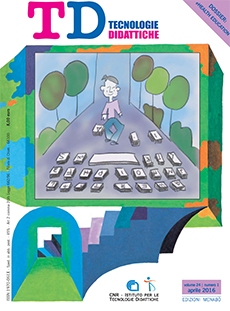The flipped classroom
Main Article Content
Abstract
Article Details
Section
Authors who publish with this journal agree to the following terms:
- Authors retain copyright and grant the journal right of first publication with the work simultaneously licensed under a Creative Commons CC BY 4.0 Attribution 4.0 International License.
- Authors are able to enter into separate, additional contractual arrangements for the non-exclusive distribution of the journal's published version of the work (e.g., post it to an institutional repository or publish it in a book), with an acknowledgement of its initial publication in this journal.
- Authors are permitted and encouraged to post their work online (e.g., in institutional repositories or on their website) prior to and during the submission process, as it can lead to productive exchanges, as well as earlier and greater citation of published work (See The Effect of Open Access)
References
Calvani, A., Cartelli, A., Fini, A., & Ranieri, M. (2009). Modelli e strumenti per la valutazione della competenza digitale nella scuola. Journal of e-Learning and Knowledge Society-Italian Version (until 2012), 4(3).
Da Re F. (2009). Competenze e insegnamento. Retrieved from http://www.itismarzotto.it/wp/ wp-content/uploads/2012/05/Insegnare_e_ apprendere_per_competenze.pdf
Johnson, L., Adams Becker, S., Estrada, V., Freeman, A. (2014). NMC Horizon Report: 2014 Higher Education Edition. Austin, TX: The New Media Consortium.
Li N., Himanshu V., Skevi A., Zufferey G., Dillenbourg P. (2014). MOOC Learning in Spontaneous Study Groups: Does Synchronously Watching Videos Make a Difference?. EMOOCS 2014 Proceedings, 88-94.
Martin F. G. (2012). Will massive open online courses change how we teach?. Communications of the ACM, 55(8), 26-28.
Ryan R. M. & Deci E. L. (2000). Intrinsic and extrinsic motivations: Classic definitions and new directions. Contemporary Educational Psychology, 25, 54-67.
Tucker B. (2012). The flipped classroom. Education Next, 12(1), 82-83.

